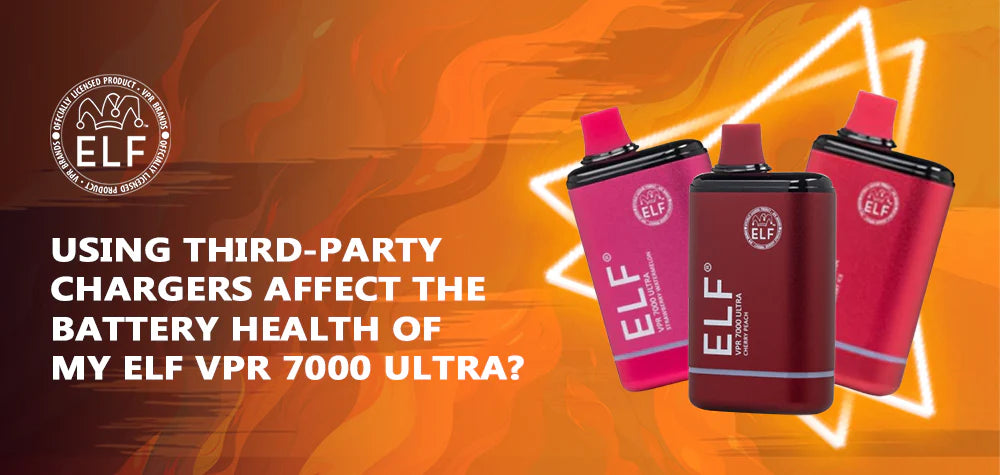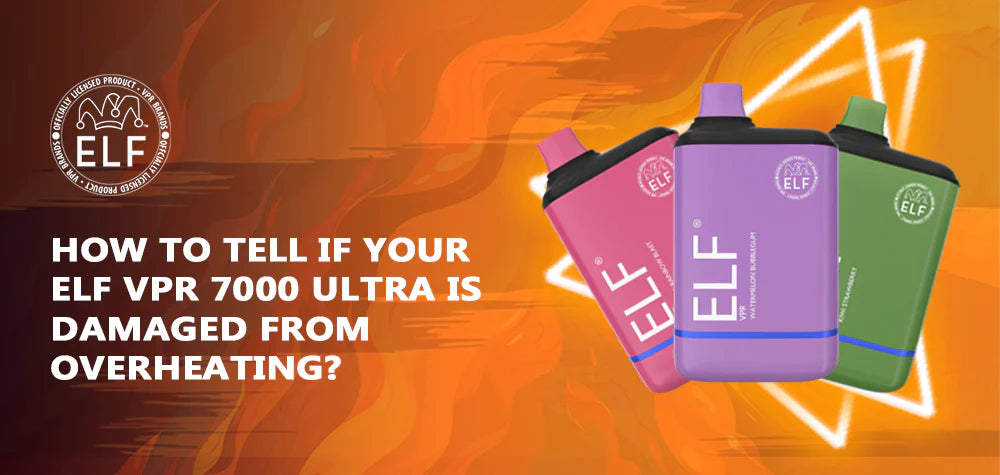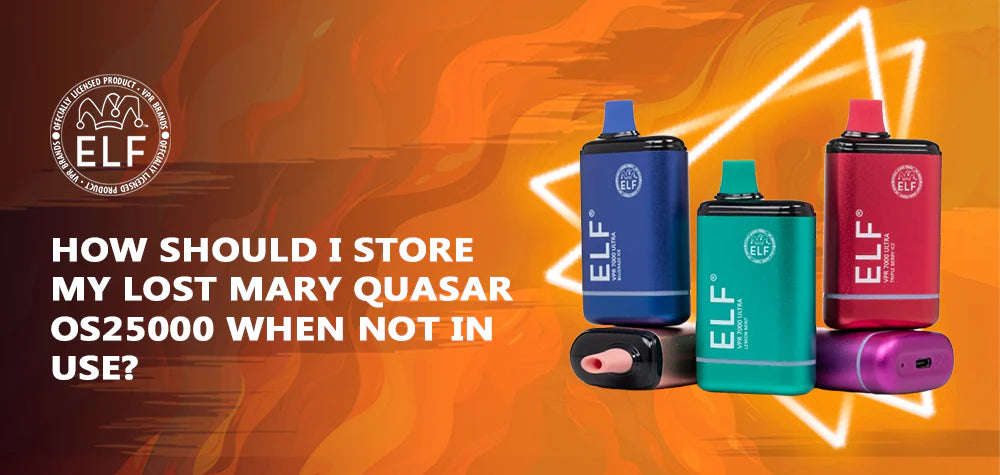
Can Using Third-Party Chargers Affect the Battery Health of My ELF VPR 7000 Ultra?
The ELF VPR 7000 Ultra is a widely used disposable vaping device, known for its convenience and impressive performance. However, many users may be unaware of the potential risks associated with using third-party chargers. While these chargers may seem like a cost-effective solution, they can significantly impact the battery health and overall performance of your device. This article will explore how third-party chargers can affect your ELF VPR 7000 Ultra, the signs of damage, and best practices for ensuring optimal battery health.
Understanding Battery Health
Importance of Battery Quality
The battery is one of the most critical components of any vaping device, including the ELF VPR 7000 Ultra. A healthy battery ensures consistent performance, reliable vapor production, and safety during use. Over time, poor charging practices can lead to diminished battery capacity, reduced lifespan, and even safety hazards.
When a battery is subjected to improper charging conditions—such as overvoltage or inconsistent current—it can become damaged from overheating. This overheating can cause internal components to fail, leading to issues such as swelling, leakage, or even catastrophic failure.
How Chargers Impact Battery Health
The charger you use plays a pivotal role in maintaining battery health. Original equipment manufacturers (OEMs) design their chargers to meet specific voltage and current requirements for their devices. Third-party chargers may not adhere to these specifications, potentially leading to overcharging or undercharging scenarios that can harm the battery.
Using a charger that supplies too much voltage can cause excessive heat generation within the battery during charging cycles. This heat can lead to irreversible damage, reducing the battery’s ability to hold a charge over time and increasing the risk of failure.
Signs That Your Battery May Be Affected
Physical Indicators
If you suspect that your ELF VPR 7000 Ultra’s battery health has been compromised due to third-party charging, look for physical signs of damage. One of the most alarming indicators is swelling or bulging in the device’s casing. If you notice any deformation or unusual shapes in your device, discontinue use immediately.
Additionally, if you detect any unusual smells—such as burnt plastic or chemical odors—this could signify that internal components are overheating or failing. These physical indicators are crucial for identifying potential issues before they escalate into serious safety hazards.
Performance Issues
Another sign that your device may be suffering from battery health issues is a noticeable decline in performance. If you experience reduced vapor production or an inconsistent hit while using your ELF VPR 7000 Ultra, this may indicate that the battery is struggling to deliver adequate power.
Moreover, if your device drains quickly despite being fully charged or fails to hold a charge at all, these symptoms could point to damage caused by improper charging practices. A compromised battery may not only affect performance but also pose safety risks if left unchecked.
The Risks of Using Third-Party Chargers
Inconsistent Charging Speeds
One significant risk associated with third-party chargers is inconsistent charging speeds. Unlike OEM chargers designed specifically for your device, third-party options may not provide stable voltage and current levels. This inconsistency can lead to erratic charging cycles that stress the battery and contribute to overheating.
Lack of Safety Features
Many third-party chargers lack essential safety features found in OEM products. These features—such as overcharge protection and temperature regulation—are crucial for preventing overheating and ensuring safe operation. Without these safeguards, using a third-party charger increases the likelihood of battery damage and potential hazards during charging.
Warranty Implications
Using third-party chargers can also void warranties provided by manufacturers. If your ELF VPR 7000 Ultra experiences issues related to battery health after using an unauthorized charger, manufacturers may refuse to honor warranty claims based on improper charging practices.
Best Practices for Maintaining Battery Health
Use OEM Chargers
To ensure optimal battery health and performance, always use OEM chargers specifically designed for your ELF VPR 7000 Ultra. These chargers are engineered to meet the exact specifications required by your device, minimizing the risk of damage from overheating or inconsistent charging.
Monitor Charging Habits
Pay attention to your charging habits; avoid leaving your device plugged in for extended periods after it has reached full charge. Overcharging can lead to excessive heat buildup within the battery, which can compromise its integrity over time.
Regular Inspection
Regularly inspect your ELF VPR 7000 Ultra for any signs of physical damage or performance issues. If you notice swelling or unusual smells emanating from the device, stop using it immediately and seek professional assistance.
Conclusion
Using third-party chargers with your ELF VPR 7000 Ultra poses significant risks to battery health and overall device performance. By understanding how these chargers can negatively impact your vaping experience—leading to potential overheating and damage—you can take proactive steps to protect your device.
Always prioritize using OEM chargers designed specifically for your vaping device and monitor charging habits closely. By following best practices for maintaining battery health, you can enjoy a safer and more reliable vaping experience with your ELF VPR 7000 Ultra while minimizing risks associated with improper charging methods.


